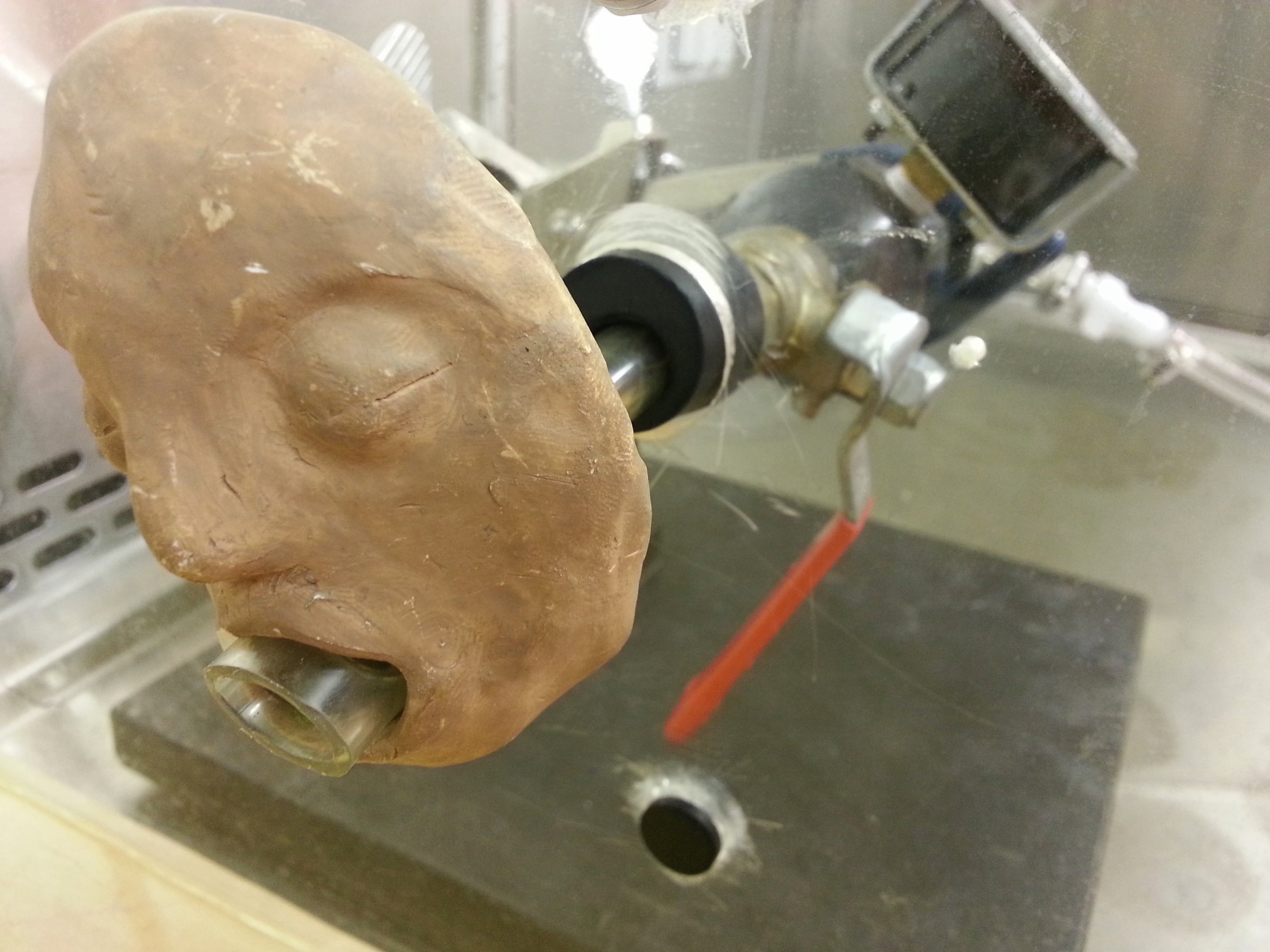
In the experiment straight out of the dreams of an 8-year-old boy, but published in the journal PLOS ONE, scientists have invented a machine that vomits on command.
They’re using it learn more about norovirus, a highly contagious virus that often leads to vomiting. There are about 21 million cases of norovirus a year in the U.S.—a quarter of them linked to food—and it’s primarily spread through person-to-person transmission.
How, exactly, was what researchers wanted to figure out. “We know the virus is shed in massive amounts in the fecal material of infected individuals—I mean like millions to billions of particles per gram,” says study author Lee-Ann Jaykus, professor of food science at North Carolina State University and scientific director of the USDA-NIFA Food Virology Collaborative (NoroCORE). Much less is known about how it can spread through virus particles in the air after a person vomits. “We have suspected aerosolization of virus in vomiting for probably 20 years, but we never provided any kind of laboratory based proof of it,” says Jaykus.
MORE: It Only Takes A Few Hours For Viruses To Spread Everywhere
Recruiting students to vomit virus particles in a laboratory would likely have been a challenge. So Jaykus asked her environmental engineering colleague, Francis L. de los Reyes III, to design a machine that simulates human vomiting. What resulted was a scaled-down stomach system—plus a cute little face for fun—that spewed out vomit at a velocity, volume and viscosity that matched the real thing. (The chunky kind was represented by vanilla JELL-O pudding; the watery kind by artificial saliva. Both were doused with green food coloring.)
Norovirus, too, had a stand-in. Researchers used another virus called the MS2 bacteriophage, which doesn’t hurt humans.
After the machine threw up in an enclosed box, a biosampler attached to the box collected the particles so that the scientists could measure how much virus was present. “That’s what we counted as the fraction that was aerosolized,” says Jaykus.
MORE: Outbreak Of Norovirus Linked To A Popular Oregon Lake
About 0.02% of the virus in the vomit, at most, was aerosolized. That sounds like a safe number, until you consider that it equals roughly 13,000 particles—and people can get sick by being exposed to as few as 20 virus particles.
“This paper allows us to be relatively certain that norovirus is aerosolized at least to some extent in vomiting,” Jaykus says. “Proving that is very important in understanding the transmission of the virus.”
If you’re near the splash zone of a public vomiting incident, what do you do? Based on the results of this experiment, “the safest thing for you to do would be to walk away,” Jaykus says. “The further you get from the aerosol, probably the better off you are.”
More Must-Reads from TIME
- Donald Trump Is TIME's 2024 Person of the Year
- Why We Chose Trump as Person of the Year
- Is Intermittent Fasting Good or Bad for You?
- The 100 Must-Read Books of 2024
- The 20 Best Christmas TV Episodes
- Column: If Optimism Feels Ridiculous Now, Try Hope
- The Future of Climate Action Is Trade Policy
- Merle Bombardieri Is Helping People Make the Baby Decision
Write to Mandy Oaklander at mandy.oaklander@time.com